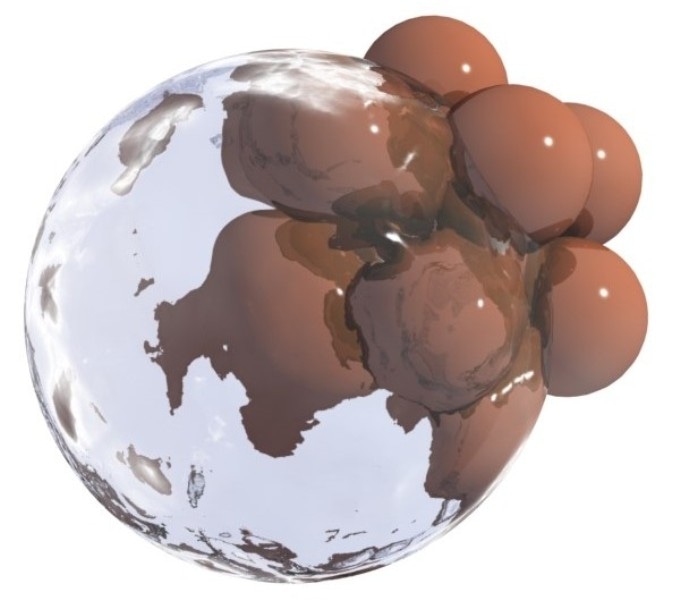Aug 27 2018
Innovative model breaks down water molecules to demonstrate interactions between tiny copper clusters utilized as low-cost catalysts in hydrogen production.
 Adsorption of water molecules on the surface of copper nanoparticles could produce hydrogen faster and more efficiently. (Image credit: Springer)
Adsorption of water molecules on the surface of copper nanoparticles could produce hydrogen faster and more efficiently. (Image credit: Springer)
Copper nanoparticles, in the form of coatings or dispersed in water, have a wide range of potential applications, such as ink jet printing, lubrication, and as luminescent probes, leveraging their antifungal and antimicrobial activity, as well as in in fuel cells. Another potential application is splitting water molecules and forming molecular hydrogen in gaseous form by using copper as a catalyst.
According to a new paper reported in EPJ D, at the core of the reaction, copper-water complexes are produced in ultra-cold helium nanodroplets as part of the process of hydrogen production. For the study authors, Stefan Raggl, from the University of Innsbruck, Austria, and coworkers, splitting water in this way is a great means of avoiding splitting hairs.
Studies performed in the past demonstrated that at the molecular level, copper nanoparticles are oxidized by water until the surface of the particles is saturated with hydrogen-carrying molecules (known as hydroxyl groups). Hypothetical work also demonstrated that a monolayer of water, after it is adsorbed on the copper particles, suddenly changes to a half-monolayer of water and also a half-monolayer of hydroxide (OH) while producing hydrogen gas.
In their analysis, Raggl and coworkers produced neutral complexes of copper and water by consecutively doping helium nano-droplets - which are maintained at the ultra-cold temperature of 0.37 K in a state called superfluid - with water molecules and copper atoms. Subsequently, these droplets are ionized by electrons. The authors demonstrated that the composition of the most important ions relies on the partial pressures of copper and water in the cell in which the reaction takes place. They viewed ions that contained several dozen water molecules and several copper atoms.
The authors admitted that they were not able to directly view the expected formation of hydrogen because their system is not made to identify electrically neutral entities.